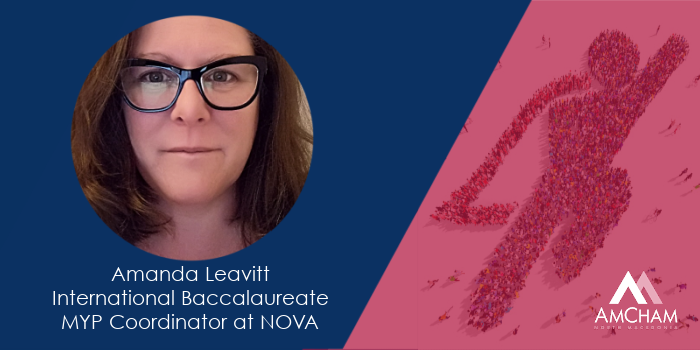Interview with: Amanda Leavitt, International Baccalaureate (IB) Middle Years Program (MYP) Coordinator at NOVA International Schools
Published on: December 2, 2020
1. What are some of the digital transformation steps that your school adopted in the last period?
Like most schools in the world, the pandemic hit and Nova had to immediately shift to a new, digital model of teaching and learning. That meant fully rethinking every aspect of our current educational model, from lesson planning and delivery to communication tools and records storage. As a school, we had been in the midst of transitioning to a 1:1 Bring Your Own Device (BYOD) learning environment, adopting the International Baccalaureate (IB) Organizations ’s Middle Years Program (MYP), and updating both our Learning Management and School Information systems. So in a way this was a perfect storm. Thus, Nova’s digital footprint is completely different this academic year from the last one.
Certainly, the biggest change has been in lesson planning and delivery. All of our secondary school classes, with the exception of grade 6, are fully digital. Our Pre Kindergarten to grade 6 follow a blended model (combination of distance and face-to-face). This has meant rapidly training teachers in new tech tools. Both divisions utilize online platforms (Mangebac, ALMA, and SeeSaw, respectively) combined with the Google Suite (Docs, Sheets, Meet, Classroom, among others) for lesson planning and delivery. In terms of productive change, this has created a new transparency in the school. Parents and students can now see unit plans and lesson progressions, and they have the advantage of a live gradebook to track their child’s progress in real time.
Teachers also had to be trained in complementary software and hardware. For example, blended classes utilize digital cameras and speakers to provide congruent lesson instruction. Teachers have had to learn to implement interactive presentation and formative assessment apps such as PearDeck, Spiral, and EdPuzzle. Needless to say, it has been an overwhelming time to be a teacher, globally.
2. What were the biggest challenges you came across and how did you addressed these challenges?
There have been many different challenges. As noted by colleagues, worldwide, we have not only asked teachers to change everything about their work day and life, but to do so in the midst of a global pandemic. No other industry has had to change and adapt as quickly and completely as education. Imagine for a moment that you have been working in your profession for 20 or more years. You are a master at your job and seemingly overnight the job changes completely. All the tricks and tips you knew before – to engage students, to inspire them – no longer work/apply. Not only do you have to learn a completely new skill set, you don’t even have the time to mourn the loss of the last. This has been the biggest challenge, keeping morale up while asking teachers to completely transform every aspect of their professional lives.
On a practical level we have provided training in all of the new platforms. We began recording them so that teachers could go back and access them as needed. We increased our professional development budget this year so that teachers could access the support they needed. We have also focused on mental health and well being. This has included providing safe, social distancing socialization opportunities, and wellness workshops. We’ve taken walks in the park, organized hikes, done trivia events through Kahoot and other initiatives. With many of our staff working remotely, it is hard to maintain a connection. We recently initiated a community conversation forum for teachers to participate and share their frustrations, success and actionables.
3. How the digital transformation helped your school in these uncertain times?
In every curse there can be a blessing. While the challenges of having to transform so quickly are plentiful, there are also large benefits as well. Namely, we have increased transparency in our school, have created clearer and more open lines of communication, and have been able to embrace best 21st century practices. Increasing transparency through online programs so that our community has a clearer understanding of what happens in the classroom is an excellent boon. With this in mind, we continue to strive to model resilience for our students. For example, while technical difficulties can continue to present challenges, even for well-resourced young adults, making sure that we all start and end with conscientious compassion as our key principle of engagement is a valuable lesson we are all learning.
Finally, we were also able to see our own organizational resilience in action. The challenges presented revealed the areas in need of improvement, but also our strengths. We believe this experience will make us overall a better institution, going forward.

